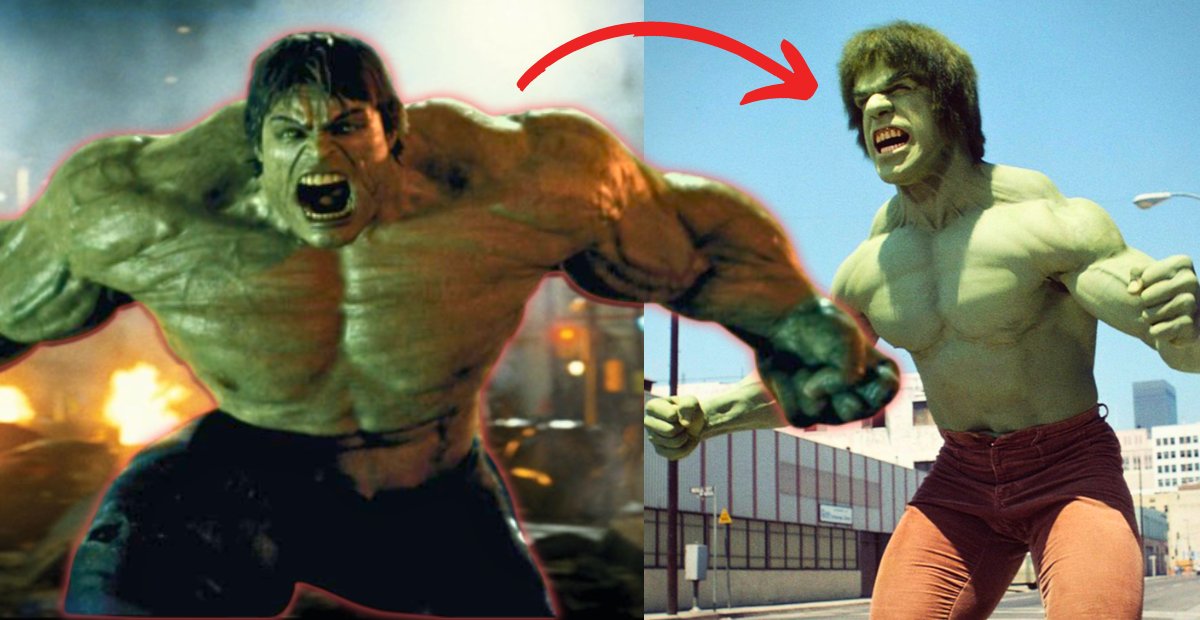Alright, nobody freaked out, but our Hulk in the MCU is truly getting smaller than he was.
Yes, that is not just about the feeling “Hulk looks weaker” or any subjective estimation, his height is recorded in numbers; and notably, his recent appearances are his shortest versions.
There are explanations for this. Let’s get into the details!
Contents
Hulk Gets Bigger When Angrier; But What About His Height?
After taking a close look at his profile, I found an explanation that aligns well with Hulk’s unique gamma-radiated physiology.
This gamma radiation affects Hulk by allowing his emotions, particularly anger, to unleash tremendous gamma energy within him, resulting in a dramatic increase in strength.
Consequently, the angrier Hulk becomes, the more his mass muscle increases to accommodate this enhanced strength, and thus, affects his height.
The critical aspect here is “muscle mass.” For someone like Hulk, significant changes in muscle size can affect his perceived height.
That’s why, as Hulk grows angrier and his strength, muscle mass, and agility dramatically increase, but the change in his actual height appears less noticeable.
Maybe You Didn’t Notice: Hulk’s Height Has Changed Over Time
Although Hulk is commonly known to be around 8 feet tall, this measurement has varied considerably across comic book renditions and movie adaptations, especially in live-action.
In the “The Incredible Hulk” TV series (1978 – 1988), Hulk’s height was approximately 6.5 feet—just slightly taller than the average person.
This near-human standard portrayal was influenced by the fact that the character was played by the actual actor and bodybuilder, Lou Ferrigno.
Moving to the big screen, Hulk’s portrayal was entrusted to visual effects artists, allowing his “recommended” height to be achieved across the movies.
In the 2003 Universal-produced “Hulk” featuring Eric Bana, the character’s height dramatically increased to 15 feet, fluctuating with his level of anger.
However, when control of the Hulk character returned to Marvel Studios, his height was reduced to about 9 feet in “The Incredible Hulk” (2008).
After Mark Ruffalo’s portrayal in “The Avengers,” Hulk’s depiction stabilized under the expertise of Industrial Light & Magic (ILM), the VFX team responsible for his rendering. Nonetheless, the variability in Hulk’s height continued.
In these films, Hulk is generally shown to be around 8 to 8.6 feet tall, slightly shorter than in his solo film but more consistent in size.
Yet, a notable change occurred with the introduction of “Professor Hulk” in “Avengers: Endgame.”
Despite the high-angle shots in the film, it is undeniable that the 2012 Hulk appears larger than the more intellectual Professor Hulk.
Furthermore, there are claims that in the “She-Hulk” series, Hulk’s height has decreased to around 7 feet, possibly influenced by his more approachable demeanor.
Another detail in this series highlights how Professor Hulk was relatively smaller compared to his previous form when compared to Abomination, Hulk’s opponent in ‘The Incredible Hulk’ (2008). Notably, in the 2008 movie, they were depicted as being the same size.
While Hulk’s height in movie adaptations has varied, there is a noticeable trend of him becoming smaller in recent MCU films. Why could this be?
What Could Be the Reasons Behind This?
We know that Hulk’s height varies across movie adaptations, but why hasn’t Marvel kept his size consistent throughout the franchise?
One theory is that Hulk’s strength was intentionally reduced in recent movies.
As previously mentioned, Hulk’s height is linked to his temper—the angrier he gets, the larger he becomes.
Notably, Hulk’s tallest depiction was in “Thor: Ragnarok” at 8.5 feet, likely due to his prolonged time on Sakaar which allowed him to fully develop his own identity.
As the Grandmaster’s champion, Hulk enjoyed a celebrity lifestyle, possibly the closest to a “normal life” he could achieve.
Then, the creation of Professor Hulk saw Bruce’s intelligence inject more humanity into Hulk, tempering his rage and thereby affecting his strength.
This calmer demeanor likely reduced his muscle mass, overall power, and consequently, his height.
This transformation seems to align with Marvel Studio making this character become “your friendly neighbor Hulk” by building up this character with a sense of humor and more human-like.
Firstly, Marvel portrays Hulk not just as a character of raw muscle and smashing, but also as having the innocence of a five-year-old boy, occasionally speaking a few words for a humorous touch.
Then, in the debut of Professor Hulk in ‘Avengers: Endgame,’ he wore a shirt and took a selfie with a young fan, which, as Scott Lang said, was initially quite confusing.
And then, the release of “She-Hulk” and the introduction of other family members of the Big Green confirmed this direction.
Last but not least: as K.E.V.I.N said in “She-Hulk” I bet Kevin Feige would say the same in real life when someone put a project of Hulk on his table: “You (Hulk) are very expensive!”
Mark Ruffalo, also thinks a standalone movie for Hulk is ever going to happen due to its production cost (it could be more expensive when they let Hulk smash).
What do you guys think? Would you like to see the big, smashing Hulk from “The Avengers” again? Share your thoughts!
